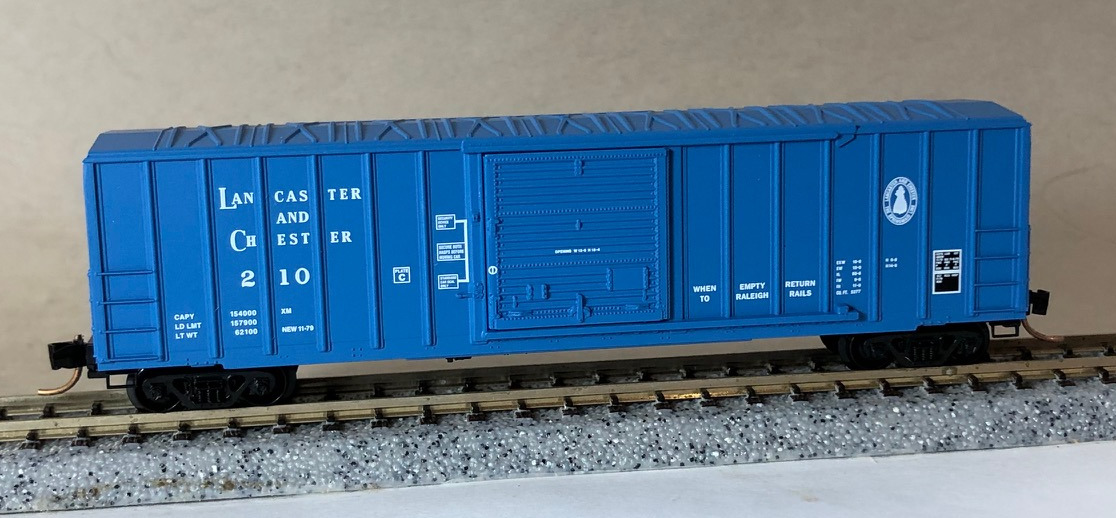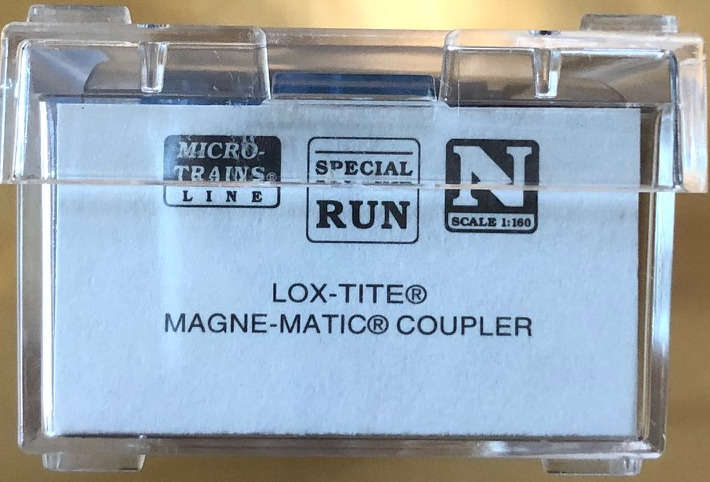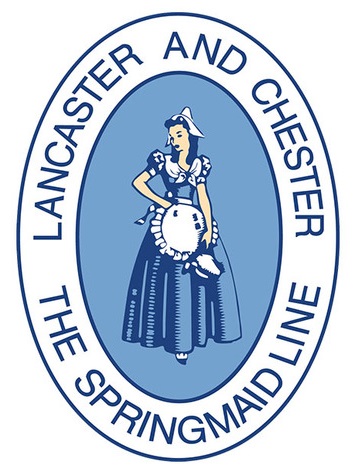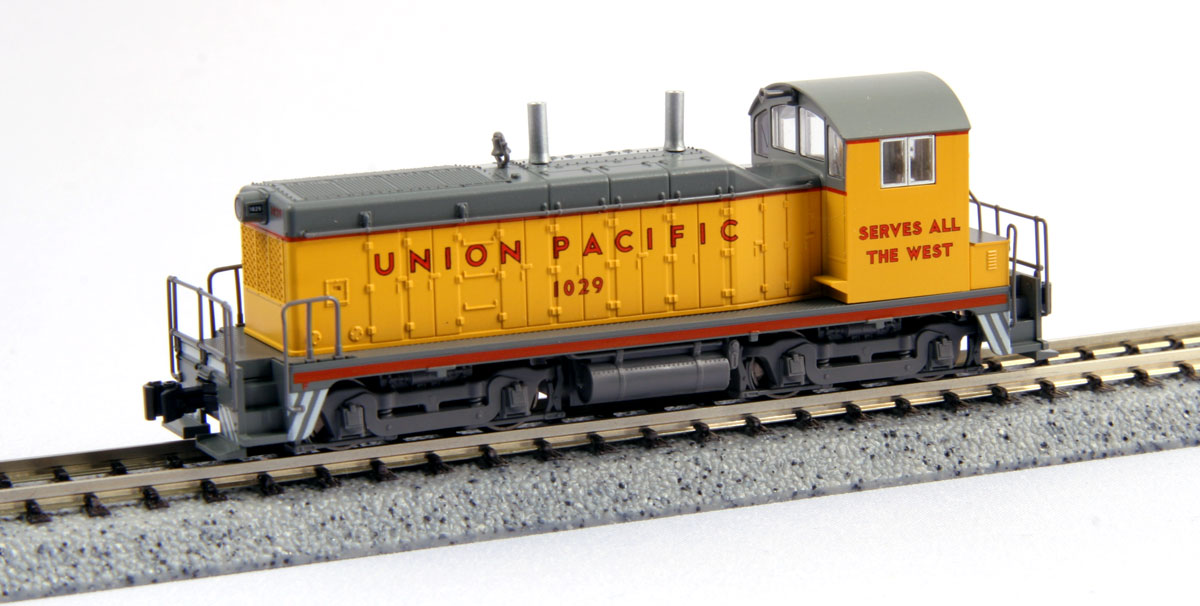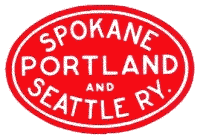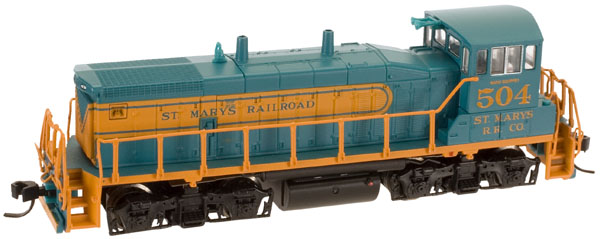Specific Item Information: This car was only available as part of 4-Pack NSC 99-63
Model Information: This model was first produced by Kadee in February of 1981. It is a model of a 50 Foot Steel Rib-Side Single Sliding Door Boxcar. Specifically, this Micro-Trains body style models the FMC 50' 5077 Single Sliding Door prototype. It is also used by Micro-Trains to model Pullman Standard 50' boxcars. Hence on some releases, this car is labeled as a Pullman Standard and in other cases it is labeled as an FMC boxcar, and it also is frequently labeled as a '50' Rib Side Box Car[sic]' with no mention of prototype whatsoever. It appears to be closest to the FMC 5077 boxcar prototype (from the 1970s) in any event. These models can appear with any one of multiple different sliding door types. The doors for this model are operating ones (cool!).
Prototype History: In the 1970's with the growth of the Per Diem business model, FMC produced a series of 50 foot box cars in different configurations. The single-sliding-door configuration is one of the best known and used widely by many different railroads. These cars were produced using the Gunderson metal works which FMC had acquired in 1965. In late 1975, FMC began producing a 5,077-cubic-foot Plate B box car for IPD and Railbox service. FMC's 5077s have seven panels to either side of the 10-foot door, an X-panel roof, and non-terminating ends that are slightly different from those used on FMC's earlier cars. Note how the sidesill is notched all the way back to the bolsters, a key feature of FMC's mature design.
The main difference between the 5077 cu. ft cars built by FMC vs the 5277-5347 cu. ft cars built by the same manufacturers is the overall height of the car, the smaller 5077 cars were Plate B while the larger 5277-5347 cars were Plate C. Over 4,300 cars were produced from 1975-1979 by FMC's Portland, Oregon plant. The cars were delivered in numerous colorful shortline paint schemes, as well as the nationwide car pool fleet of Railbox. Many secondhand cars were later seen in Class 1 railroads and large leasing company fleets under additional shortline reporting marks.
The main difference between the 5077 cu. ft cars built by FMC vs the 5277-5347 cu. ft cars built by the same manufacturers is the overall height of the car, the smaller 5077 cars were Plate B while the larger 5277-5347 cars were Plate C. Over 4,300 cars were produced from 1975-1979 by FMC's Portland, Oregon plant. The cars were delivered in numerous colorful shortline paint schemes, as well as the nationwide car pool fleet of Railbox. Many secondhand cars were later seen in Class 1 railroads and large leasing company fleets under additional shortline reporting marks.
Road Name History: The L&C began as the Cheraw & Chester in 1873 but the line’s sale on the court house steps to the Spring family in 1896 brought the change in name. The L&C links Lancaster and Chester, North Carolina which is a run of 29 miles. The Spring family owned textile mills along the line.
The early years were pretty rocky. The trestle over the Catawba River burned, followed by a depot a month later. Both were rebuilt. The line was 3’ gauge but by 1902, that was unsustainable and the line was standard gauged. Then in 1913 there was a disastrous wreck of a passenger train on Hooper’s Creek Trestle that killed 5, and wiped out the line’s passenger car fleet and the trestle. That was the end of passenger service for the Lancaster & Chester. Three years later, the bridge over the Catawba River was destroyed again, this time by a flood. The line has 66 curves, some quite sharp. The steepest stretch is Richburg Hill which has a maximum grade of 4.7%.
By the 30’s, the disasters had subsided and the L&C became famous for the use of publicity stunts such as naming 29 vice presidents, one for each mile of line. Gypsy Rose Lee was named Vice President of Unveiling.
The 50’s brought dieselization, first with GE’s and later EMD switchers. All locomotives wear the light blue with white trim and “The Springmaid Line” in the logo (a reference to the Spring’s textile business.)
In recent years, L&C has upgraded their track and bridges, and opened industrial parks along the line. In 2001, L&C bought 31 miles of connecting line from Norfolk Southern running from Lancaster to Kershaw, South Carolina.
This expansion increased traffic dramatically and more locomotives were acquired to augment what had been an all-switcher fleet. As of the end of 2013, the fleet included: three SW900’s, four SW1200’s, two SW1500’s, two GP38-2M’s, two GP38AC’s, and three GP38-2’s.
In 2010, the Spring family sold the L&C to the Gulf & Ohio shortline family. However, it appears for the moment that G&O will preserve the L&C blue paint scheme.
The early years were pretty rocky. The trestle over the Catawba River burned, followed by a depot a month later. Both were rebuilt. The line was 3’ gauge but by 1902, that was unsustainable and the line was standard gauged. Then in 1913 there was a disastrous wreck of a passenger train on Hooper’s Creek Trestle that killed 5, and wiped out the line’s passenger car fleet and the trestle. That was the end of passenger service for the Lancaster & Chester. Three years later, the bridge over the Catawba River was destroyed again, this time by a flood. The line has 66 curves, some quite sharp. The steepest stretch is Richburg Hill which has a maximum grade of 4.7%.
By the 30’s, the disasters had subsided and the L&C became famous for the use of publicity stunts such as naming 29 vice presidents, one for each mile of line. Gypsy Rose Lee was named Vice President of Unveiling.
The 50’s brought dieselization, first with GE’s and later EMD switchers. All locomotives wear the light blue with white trim and “The Springmaid Line” in the logo (a reference to the Spring’s textile business.)
In recent years, L&C has upgraded their track and bridges, and opened industrial parks along the line. In 2001, L&C bought 31 miles of connecting line from Norfolk Southern running from Lancaster to Kershaw, South Carolina.
This expansion increased traffic dramatically and more locomotives were acquired to augment what had been an all-switcher fleet. As of the end of 2013, the fleet included: three SW900’s, four SW1200’s, two SW1500’s, two GP38-2M’s, two GP38AC’s, and three GP38-2’s.
In 2010, the Spring family sold the L&C to the Gulf & Ohio shortline family. However, it appears for the moment that G&O will preserve the L&C blue paint scheme.
Brand/Importer Information: Micro-Trains is the brand name used by both Kadee Quality Products and Micro-Trains Line. For a history of the relationship between the brand and the two companies, please consult our Micro-Trains Collector's Guide.
Manufacturer Information:  Micro-Trains Line split off from Kadee Quality Products in 1990. Kadee Quality Products originally got involved in N-Scale by producing a scaled-down version of their successful HO Magne-Matic knuckle coupler system. This coupler was superior to the ubiquitous 'Rapido' style coupler due to two primary factors: superior realistic appearance and the ability to automatically uncouple when stopped over a magnet embedded in a section of track. The success of these couplers in N-Scale quickly translated to the production of trucks, wheels and in 1972 a release of ready-to-run box cars.
Micro-Trains Line split off from Kadee Quality Products in 1990. Kadee Quality Products originally got involved in N-Scale by producing a scaled-down version of their successful HO Magne-Matic knuckle coupler system. This coupler was superior to the ubiquitous 'Rapido' style coupler due to two primary factors: superior realistic appearance and the ability to automatically uncouple when stopped over a magnet embedded in a section of track. The success of these couplers in N-Scale quickly translated to the production of trucks, wheels and in 1972 a release of ready-to-run box cars.
Micro-Trains Line Co. split off from Kadee in 1990 to form a completely independent company. For this reason, products from this company can appear with labels from both enterprises. Due to the nature of production idiosyncrasies and various random factors, the rolling stock from Micro-Trains can have all sorts of interesting variations in both their packaging as well as the products themselves. When acquiring an MTL product it is very important to understand these important production variations that can greatly enhance (or decrease) the value of your purchase.
Please consult our Micro-Trains Collector's Guide

Micro-Trains Line Co. split off from Kadee in 1990 to form a completely independent company. For this reason, products from this company can appear with labels from both enterprises. Due to the nature of production idiosyncrasies and various random factors, the rolling stock from Micro-Trains can have all sorts of interesting variations in both their packaging as well as the products themselves. When acquiring an MTL product it is very important to understand these important production variations that can greatly enhance (or decrease) the value of your purchase.
Please consult our Micro-Trains Collector's Guide
Item created by: gdm on 2019-10-06 19:12:09. Last edited by Lethe on 2020-05-07 00:00:00
If you see errors or missing data in this entry, please feel free to log in and edit it. Anyone with a Gmail account can log in instantly.
If you see errors or missing data in this entry, please feel free to log in and edit it. Anyone with a Gmail account can log in instantly.


